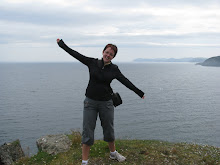How this approach differs from a more traditional approach to teaching and learning mathematics.
This type of approach is very different from a more traditional, chalk and talk approach that perhaps most of us are used to when talking about learning math. The teacher’s role, for example, looks very different in teaching math through problem solving. The teacher gives up control and is not a giver of information, or a presenter, but acts as a guide or coach to the students to help them along in the problem. According to NCTM (2007) the teacher encourages students to reason creatively and makes connections among ideas. Teachers should guide discussions very carefully so the students can learn the difference between correct mathematical reasoning and incorrect reasoning and between sound problem solving strategies and unsound ones. One of the critical roles of the teacher in this approach is to summarize classroom discussions so that the students are aware of the new knowledge and skills that they have received from the problem solving task.
As students learn math through problem solving, the level of student interactions and communications increase. Student communication of mathematical ideas, or just having the opportunity to talk through their thinking, is vital to this approach. Many people may think back to their own math classes and think about how quiet it was. Hey, some teachers may have even measured the success of the lesson by how quiet the students were as they worked in their textbooks. As students work through their problems, teachers encourage discussion about how they are thinking about the problem, about how they came up with their answers and why this is, or is not, a reasonable solution to the problem. Boaler (2008) talk of this vey thing and suggest that communication is vital to student understanding of mathematical concepts. Boaler (2008) talks about a young Irish woman, Sarah Flannery, who won the European Young Scientist of the Year award who developed a wondrous mathematical algorithm. In her autobiography, Flannery recalls the events that led to her mathematical success. Boaler (2008) states “Flannery writes: “The first thing I realized about learning mathematics was that there is a hell of a difference between, on one hand, listening to math being talked about by someone else and thinking that you are understanding, and, on the other, thinking about math and understanding it yourself and alking about it to someone else” (p.47). The National Council of Teachers of Mathematics also agree. NCTM (2007) suggest that one goal of mathematics education is for students to develop and expand their reasoning abilities. It is the mathematics classroom that is the main and central environment where students speak and write mathematics. Therefore, NCTM (2007) continues “it is essential for teachers to offer students opportunities to communicate mathematically by having them make, test, discuss, and refine conjectures, ultimately accepting or rejecting them” (p.1).
Listening to mathematics being talked about and actually talking about mathematics yourself is similar to the third way teaching math through problem solving differs from a traditional approach. Solving well designed tasks that are done so in a way that reflects student’s current understanding and skills can not be done in a prescribed text book. Students do not begin math in September on page 1 of their text and work from cover to cover, ending in June with the majority of the ‘problems’ complete. Boaler (2002) suggest that learning math in a traditional approach sees math lessons as being fast paced and procedural. Students would be ‘taught’ a procedure or skill and then assigned numerous questions to practice this newly learned skill. The questions from the text in that particular lesson were similar and there was no thinking involved to complete these tasks. Students were given a false sense of understanding as they would get most of the questions correct, for that particular lesson, but when it came to the test, they would not do well. Boaler (2002) reinforces this idea as a student, who was taught math traditionally, talks about his experience in learning math and the disconnect between what he thinks he knows and what he actually knows:
“It’s stupid really ‘cause when you’re in the lesson, when you’re doing work-even when it’s hard- you get the odd one or two wrong, but most of them you get right and you think well when I o into the exam I’m gonna get most of them right, cause you get all your chapters right. But you don’t” (p.106.)
Listening to mathematics being talked about is the same thing as doing similar problems in a text book that leads you to believe you understand. It is not until you are able to talk about mathematics yourself, or be able to solve real problems, ones in which you are not able to quickly see what methods need to be applied to reach a solution, that mathematics learning can take place. It is here, that a text book, or at least the text books that are in schools today, do not belong.

No comments:
Post a Comment